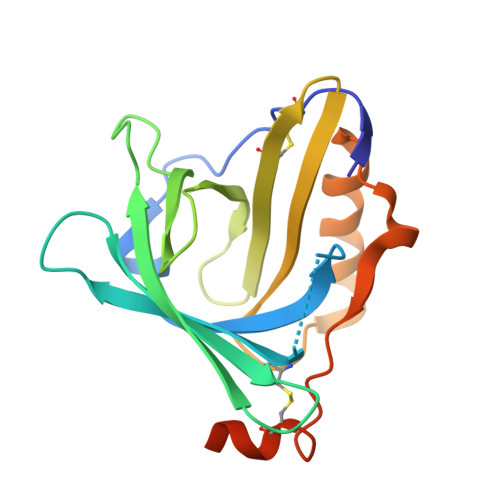Blue protein with red fluorescence
Ghosh, S., Yu, C.L., Ferraro, D.J., Sudha, S., Pal, S.K., Schaefer, W.F., Gibson, D.T., Ramaswamy, S.(2016) Proc Natl Acad Sci U S A 113: 11513-11518
- PubMed: 27688756
- DOI: https://doi.org/10.1073/pnas.1525622113
- Primary Citation of Related Structures:
5EZ2, 5F1E, 5F6Z - PubMed Abstract:
The walleye (Sander vitreus) is a golden yellow fish that inhabits the Northern American lakes. The recent sightings of the blue walleye and the correlation of its sighting to possible increased UV radiation have been proposed earlier. The underlying molecular basis of its adaptation to increased UV radiation is the presence of a protein (Sandercyanin)-ligand complex in the mucus of walleyes. Degradation of heme by UV radiation results in the formation of Biliverdin IXα (BLA), the chromophore bound to Sandercyanin. We show that Sandercyanin is a monomeric protein that forms stable homotetramers on addition of BLA to the protein. A structure of the Sandercyanin-BLA complex, purified from the fish mucus, reveals a glycosylated protein with a lipocalin fold. This protein-ligand complex absorbs light in the UV region (λ max of 375 nm) and upon excitation at this wavelength emits in the red region (λ max of 675 nm). Unlike all other known biliverdin-bound fluorescent proteins, the chromophore is noncovalently bound to the protein. We provide here a molecular rationale for the observed spectral properties of Sandercyanin.
- National Center for Biological Sciences, Tata Institute of Fundamental Research, Bangalore, India 560065.
Organizational Affiliation:
















